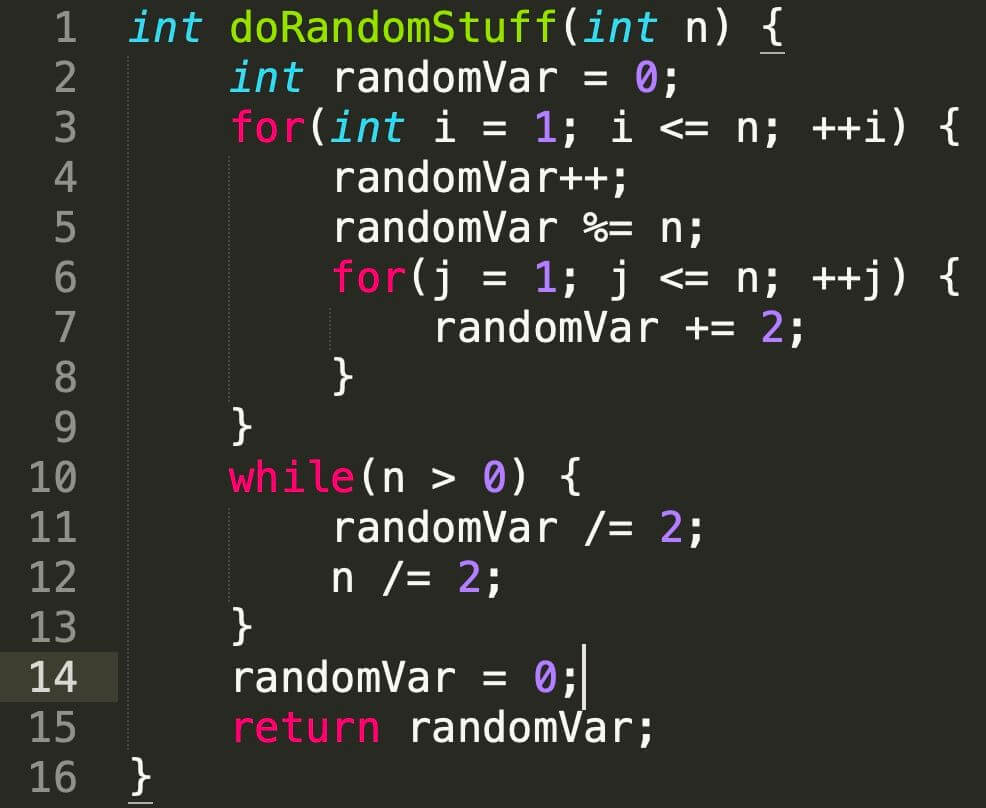How to Calculate Time Complexity?
To calculate Time Complexity, we must try to understand the code line-by-line and see how many operations it will have to do for a given set of inputs. After finding the approximate number of operations as a function of the input variable:
- Get rid of those terms that will become insignificant compared to the most significant term, when the values of the terms tend to be very large.
- Ignore the constants you see with the most significant term; here, you have your desired time complexity.
Now, what could be a question mark in your head is what is meant by an operation. On a high level, things like array accesses, additions, bit-shifts, multiples, subtractions, xors, taking an input of an integer/float, printing an integer, etc., are what I mean by an operation.
Let's take a simple (or maybe not-so-simple) example to understand.

In the code snippet above:
- The code on Line 2 runs just once, so one operation.
- Lines 4 & 5 run n times, so 2*n more operations.
- Line 7 runs n2 times, so n2 more operations.
- Then, for lines 11 & 12, notice that n is divided by 2 in each iteration, which means that the while loop will run approximately log2n times; therefore, 2*log2n more operations.
- Finally, lines 14 & 15 run once, so two last operations.
Adding all of these up:
total_operations = n2 + 2n + 2log2n + 3 (approximately)
- Get rid of the terms that don't match the most significant term's growth rate. We'll be left with just n2
- Now, n2 has no constant with it to get rid of.
- Here we go; the final time complexity is O(N2).
Note: Calculating time complexity is not always a very trivial task, sometimes we may think that a line of code runs X number of times, but when looked closely it may not be the case.
But well, practice, and you'll become better at it.